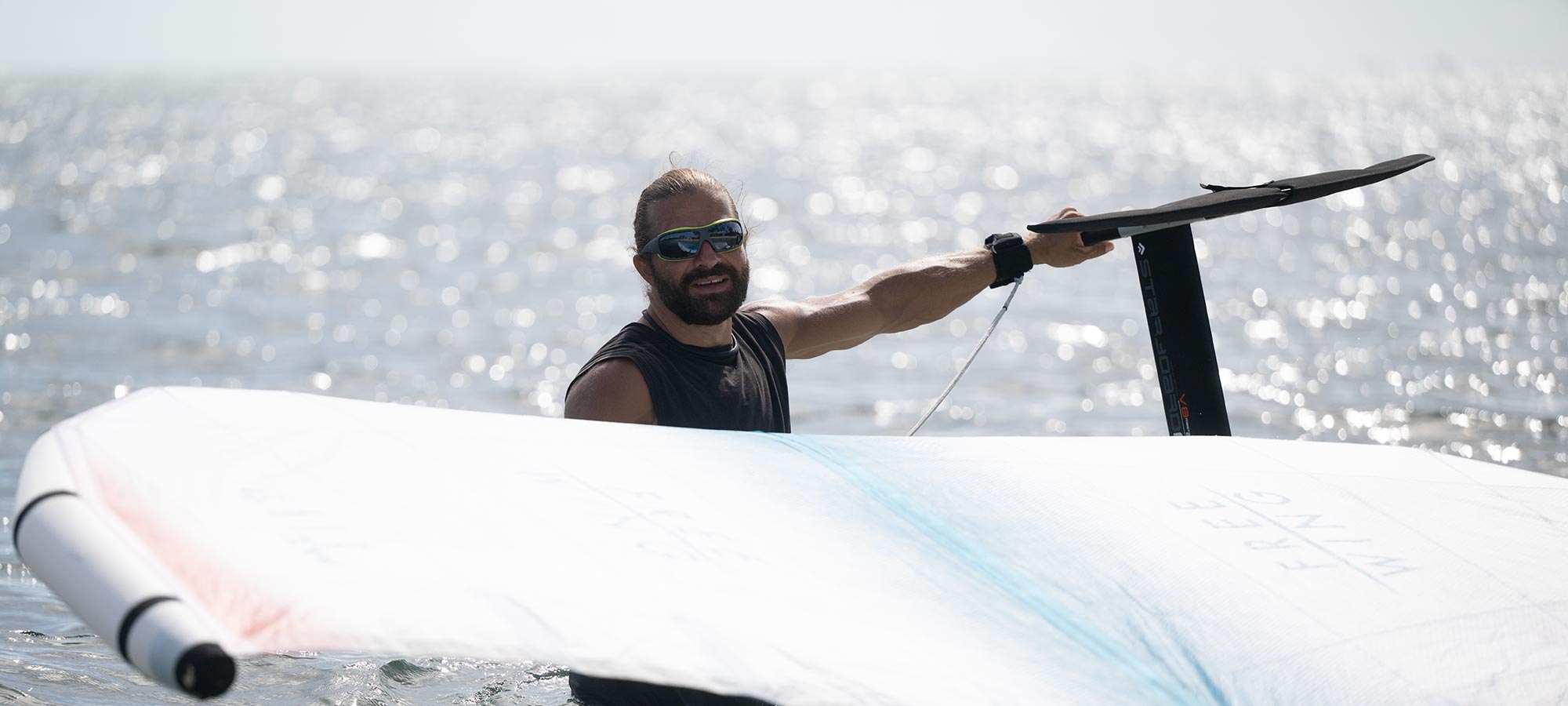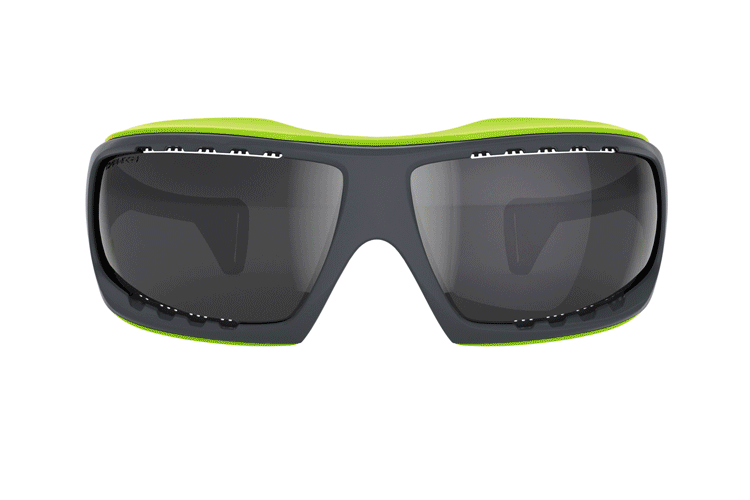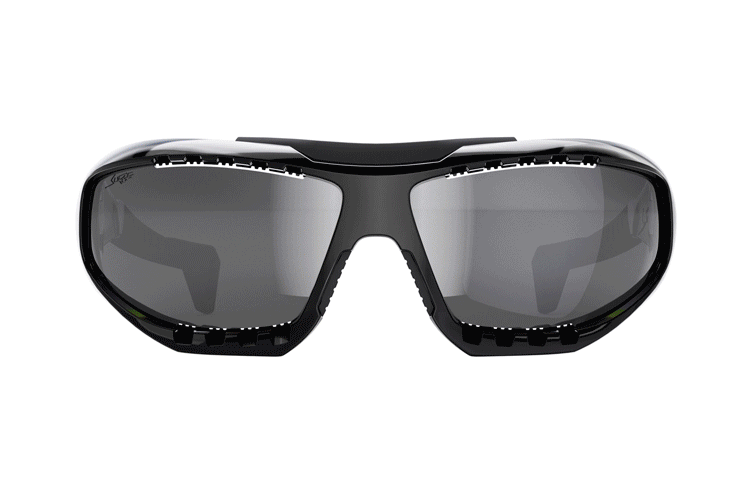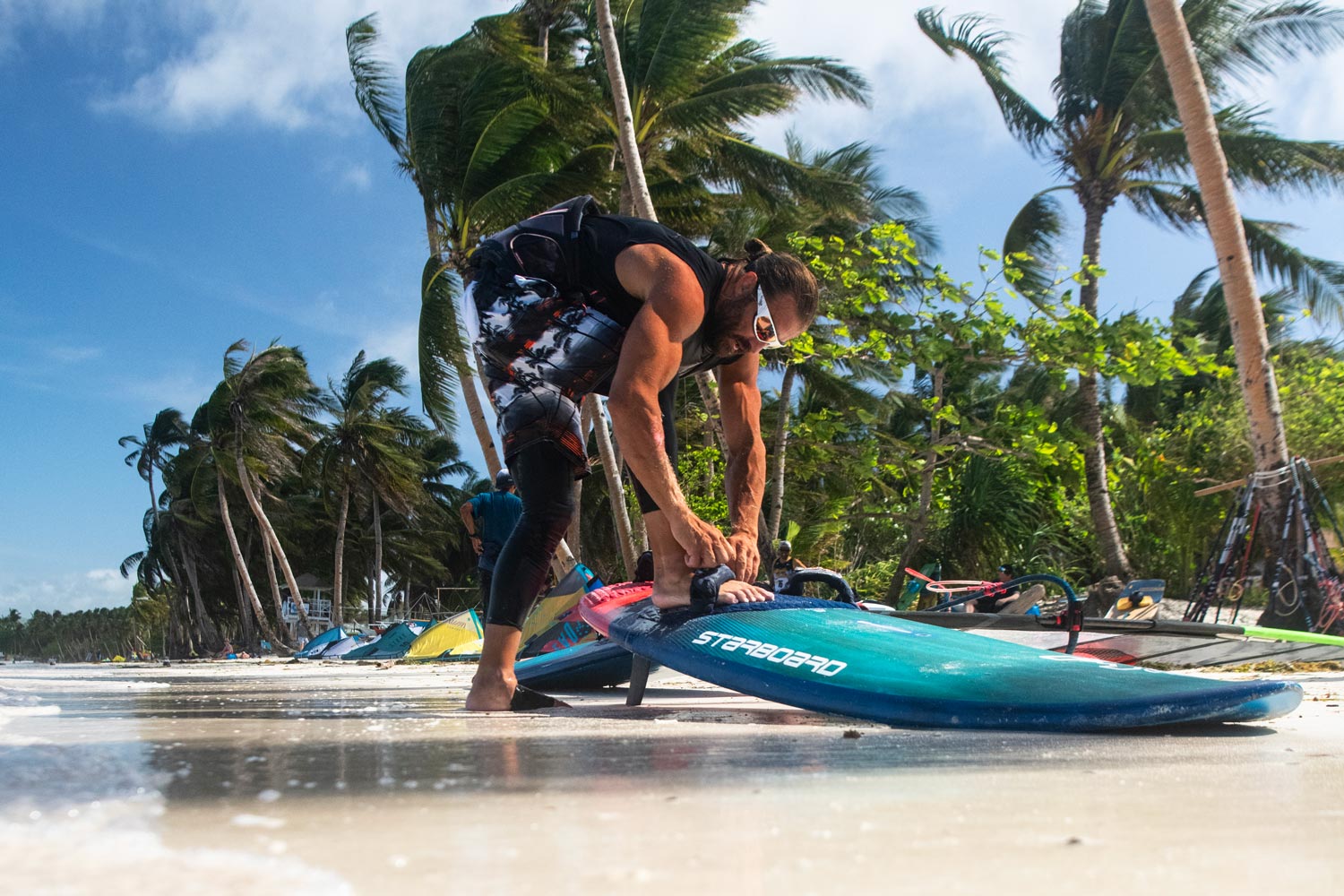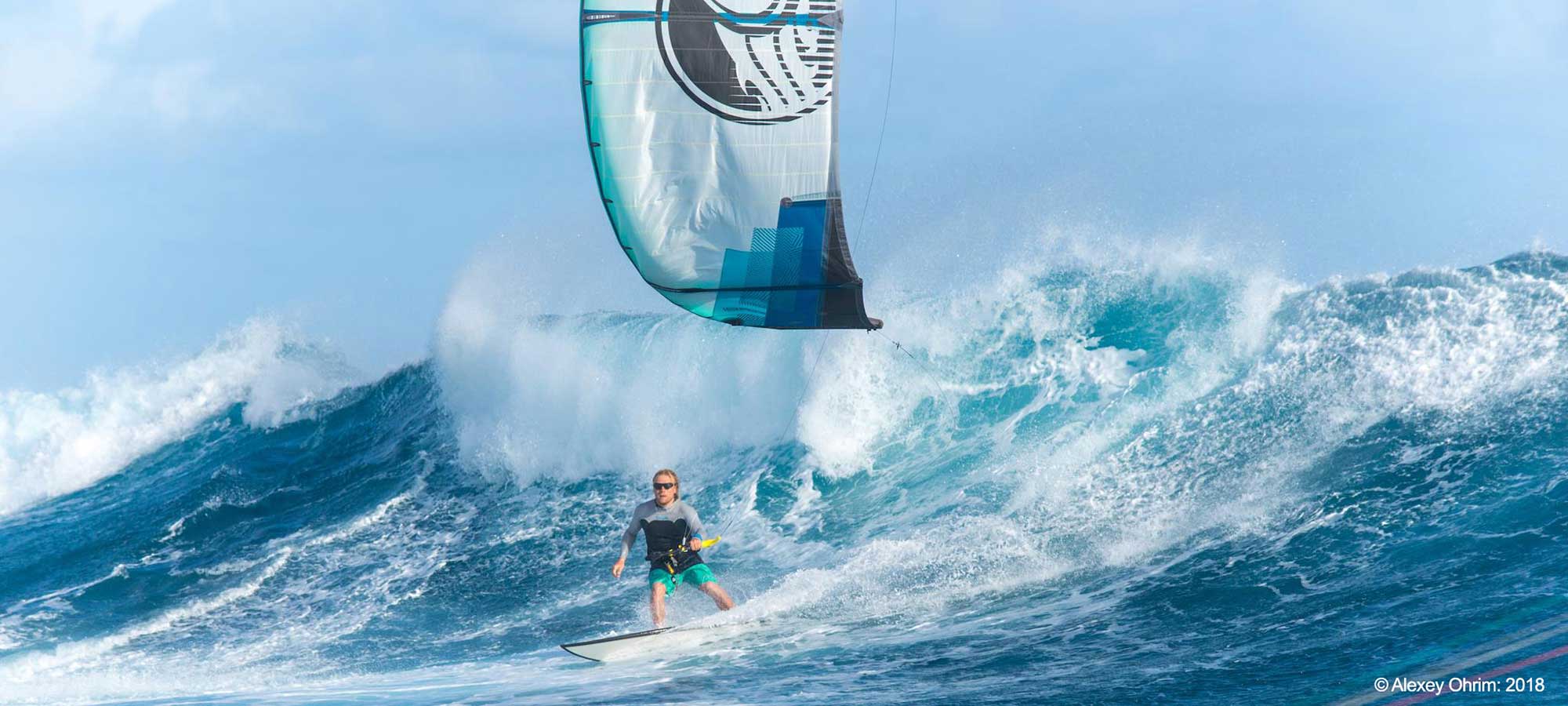In virtually every sport, our vision is fundamental to performance. The ability to read the environment, track movement, and react with precision depends on what the eyes can perceive. Many land based sports take place on grass or turf – surfaces that absorb rather than reflect light – so visual clarity is rarely compromised by reflected glare. But on the water, it’s a different story. Sunlight reflects aggressively off the surface, creating intense, horizontal glare that can overwhelm the eyes and obscure critical details. This is where polarized lenses prove invaluable – cutting through reflected light to restore clarity, comfort, and visual control.
What is Polarization?
Polarization is a technology designed to manage visible light, specifically to block out certain orientations of reflected visible light. This is unrelated to UV radiation, which operates at a different wavelength – we cover the differences between UV and visible light in our article “Eye Protection: Understanding Ultraviolet and Visible Light“.
To understand how polarization helps on the water, we need a quick primer on how light behaves. Sunlight (visible light) travels in waves. Normally this light oscillates in all directions, but when it hits a flat surface like water, it becomes “polarized” meaning the reflected light waves become largely aligned in a single direction – horizontal. This is what creates the intense glare that overwhelms our vision and obscures important details.
The diagram below illustrates how polarized lenses filter sunlight. They are engineered to block horizontally orientated light, allowing only vertically orientated light to pass through.

Why Glare is Worse on the Water
Glare is uncomfortable anywhere, but on the water it’s particularly aggressive. That’s because water is a near-perfect horizontal reflector. Depending on the angle of the sun, up to 100% of light can be reflected directly into your eyes from the surface of the water. This means you’re being hit with both direct sunlight and a mirrored wall of reflected light.
The physical consequences of exposure to glare without the use of polarized lenses include squinting, eye strain, reduced depth perception, loss of visual contrast, impaired reaction time, headaches and fatigue.
For high-performance watersports like windsurfing or kitesurfing – where situational awareness and visual timing are crucial – these impairments can significantly reduce both enjoyment and safety.
What are the Key Benefits of Polarized Lenses?
The impact of polarized lenses can vary significantly depending on the watersport genre. What enhances performance for a windsurfer might not suit a kayaker in the same way. To help you understand how polarization interacts with different activities and lighting conditions, we’ve created a table that outlines the key benefits—and potential trade-offs—across a range of watersports and times of day.
Watersports Genres | High Sun | Low Sun |
|---|---|---|
Kitesurfing Foiling Windsurfing | In the middle of the day, polarized lenses enhance contrast across your entire field of view, helping to reduce eye fatigue during extended sessions under intense sunlight. However, in light wind conditions—when the water surface is relatively smooth and lacks texture—polarization can sometimes affect depth perception as polarized lenses perceive through the water’s surface at this time of day. This may make it harder to judge height accurately when landing jumps, as the visual cues from the water become less distinct. | This is when polarized lenses truly shine. During early morning or late afternoon sessions, low-angle sunlight creates intense glare across the water—often directly in your line of sight. Polarized lenses cut through up to 99% of this reflected glare, dramatically improving clarity, comfort, and control. At these times of day, depth perception remains unaffected, leaving you with nothing but clear vision and reduced eye strain—so you can focus entirely on the ride. |
Surfing Paddle Surfing Surf-ski & Outrigger | During the middle of the day, polarized lenses offer welcome relief from the flat, low-contrast conditions that can make it harder to read the water. By enhancing contrast and separating colours and hues more clearly, they improve visual comfort and boost situational awareness—helping surfers stay more attuned to their environment. On calm, glassy days with little to no wind texture, polarization can also allow you to see through the water’s surface. In especially clear conditions, this might reveal the reef or underwater structures below, which—while visually stunning—can occasionally affect depth perception or momentarily draw your focus away from the wave. | Polarized lenses are a game-changer for dawn patrol sessions on the east coast and late afternoon seesions on the west coast, as the polarizing filter strips out the blinding glare beaming in from the horizon. The glare reduction and enhanced contrast enables an accurate reading of incoming wave sets and any surrounding hazards (like a sneaky drop-in!). Any depth perception issues that may have existed have melted away by this time of day. |
Stand-Up Paddleboarding (SUP) | Under the midday sun, polarized lenses enhance underwater visibility and bring the marine world to life—revealing turtles, fish, and other sea life moving beneath your board. Unlike some fast-paced watersports, depth perception is rarely an issue with stand-up paddleboarding, making it an ideal match for polarization. The improved contrast and reduced surface glare give you a heightened awareness of both what lies below and what’s happening around you, making polarized lenses a perfect companion for exploring the water throughout the day. | This is when polarized lenses truly come into their own. During sunrise or sunset sessions, low-angle sunlight can create intense reflected glare across the water’s surface—often right in your line of sight. Polarized lenses effortlessly cut through this glare, keeping your vision clear and comfortable. For paddlers who enjoy the calm of early morning or the glow of the golden hour, your eyes will thank you for the added clarity and reduced strain. |
Rowing | While reflected glare is typically less intense at midday, the overhead sun often creates flat, washed-out lighting that can dull contrast and strain the eyes. Polarized lenses transform this flat light into sharper, more defined visual detail—enhancing clarity across the water and allowing rowers to stay fully focused on rhythm, technique, and surroundings. By taming the intensity of midday sunlight, polarization improves overall visibility and reduces eye fatigue, helping you maintain concentration through every stroke. | Rowers are often on the water at first light, embracing the calm and quiet of the early morning before the world stirs. It’s a uniquely serene time—but when the sun does make an appearance, it often brings with it a harsh, low-angle glare that reflects directly off the water’s surface. Polarized lenses transform this potential distraction into a non-issue, cutting through up to 99% of reflected glare. The result is a clearer, more comfortable visual field—so you can stay fully immersed in your technique and make the most of every stroke in those precious morning hours. |
Kayaking | For kayakers on flat or shallow water, glare may not always be a major concern at midday, but polarization still delivers a crucial advantage: it allows you to see through the surface to spot submerged hazards early, giving you time to adjust your line with confidence. In contrast, whitewater paddlers face a different challenge. Even in the middle of the day, glare can be a persistent issue—not from a static surface, but due to the dynamic reflections created by churning, uneven water. In these environments, it’s not just the height of the sun that matters, but the ever-changing angles of the water itself. As the surface constantly shifts, it continuously creates new angles for glare to form, making polarized lenses a valuable tool for maintaining visibility and reacting quickly in fast-moving terrain. | Early morning and late evening are some of the most rewarding times to be on the water—quiet, calm, and often breathtakingly beautiful. But they also come with some of the most difficult lighting conditions for the eyes. Low-angle sunlight reflects directly off the water’s surface, creating intense glare that can make it hard to see what lies ahead. Polarized lenses are a game-changer in these conditions, stripping away the glare and restoring clarity. Whether you’re navigating open stretches, winding through mangroves, or scanning for submerged obstacles, polarization enhances contrast and comfort—so you can stay focused on your surroundings and fully enjoy the serenity of these golden-hour paddles. |
Sailing | Midday sailing often means long hours under intense sun, where the brightness reflecting off sails, deck and water can be overwhelming. Polarized lenses bring that brightness under control – reducing glare from the many surfaces around you, sharpening contrast, and helping you distinguish subtle details on the water such like wind lines. With improved visual clarity, you can stay focused on tactics, trim, and your course without the distraction of eye fatigue building over time. | Sailors are often exposed to some of the most intense glare of any watersport, due to the sheer number of reflective surfaces at play—water, sails, polished decks, chrome stanchions, and rigging all contribute to a visually overwhelming environment. In the early morning and late afternoon, this can create a barrage of both unpolarized and polarized light coming from multiple angles, making it especially uncomfortable on the eyes. This is precisely when high-quality polarized lenses prove their worth—cutting through the chaos of reflected light and restoring visual clarity, comfort, and focus on the task at hand. |
Fishing | Polarized lens technology provides multiple advantages for fishing, especially for those engaged in sight fishing during the middle hours of the day. On lakes, rivers, or streams, polarized lenses see through the surface layer, revealing weed beds, submerged logs, drop-offs, or cruising fish. This gives anglers a tactical advantage in positioning, casting, and presentation. Other clear benefits of polarization include enhanced contrast (promoting easier bite signal recognition), and reduced eye fatigue. | Inland anglers often face intense reflection from narrow water bodies or angled banks during early and late hours. Polarized lenses neutralize this low-angle glare, making it easier to scan the surface for activity and track your lure or fly. Whether you’re casting into a glassy river at dawn or reading a stillwater rise in the fading light, the increased contrast and reduced strain help you stay locked in on the action—and avoid missing that critical take. |
Are There any Downsides to Polarized Lenses?
Choosing a single lens type to perform flawlessly in all light and water conditions is a challenge, especially for dynamic watersports like surfing or wing foiling.
While polarized lenses are excellent at removing glare, they can sometimes alter how the water surface is perceived, particularly around midday, when the sun is directly overhead. At this time of day, sunlight enters the water at a steep angle and is absorbed more efficiently than at lower sun angles. This allows more vertically orientated light to penetrate and illuminate what’s beneath the surface, which polarized lenses help reveal by cutting surface reflections.
However, for watermen and women who rely on reading the texture of the water surface, such as wing-foilers judging their height above the surface, this enhanced “see-through” effect caused by polarization can reduce the reliability of the visual cues they rely on. That’s why a small quiver of lens options, and the flexibility to switch them as conditions change, is often the optimal approach.
The Bottom Line
Polarized lenses are an essential tool in your quiver—but not always a one-size-fits-all solution. For athletes whose sessions span changing light conditions or who rely on nuanced visual cues from the water surface, the ideal setup might include a quiver of lenses
Polarized lenses (for bright days – to cut glare in the early mornings and late afternoons)
Photochromic Lenses (that adjust to fluctuating light conditions or when reflected glare is not an issue)
Fixed tint Lenses (for middle of the day bright sunshine when it is essential to pick out surface textures)
Just like you wouldn’t choose one board or sail for all conditions, the same applies to lenses. Know when polarization gives you the edge – and when a different visual approach might serve you better.
Custom Watershades with 20% Discounted Extra Lens Set
We understand that lighting conditions on the water can shift dramatically throughout the day—and that no single lens can perform perfectly in every scenario. That’s why all of our watershades are designed with easy lens interchangeability, allowing you to adapt your eyewear as conditions change. Whether you’re heading out for a sunrise paddle, a midday foil session, or an evening sail, having the right lens at the right time makes all the difference. To help you build a versatile and performance-ready quiver, we’re offering a 20% discount on all additional lenses when purchased with any Custom Typhoon, Custom Surge, or Custom FLO.
